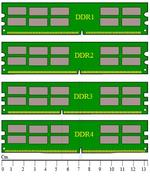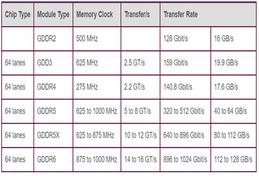Altera and Micron Achieve FPGA and Hybrid Memory Cube Interoperability
Altera and Micron successfully complete interoperability testing between Altera's Stratix V FPGA and Micron's Hybrid Memory Cube (HMC).
Showing 25 posts (Page 1 of 2)
Advertisement
Altera and Micron successfully complete interoperability testing between Altera's Stratix V FPGA and Micron's Hybrid Memory Cube (HMC).

Explore ARM bus technology (AMBA, AHB, APB), memory types (ROM, DRAM, SRAM), and peripherals. Understand how they contribute to embedded system design.

Explore the ARM cache architecture, including L1, L2, and L3 caches, and specialized caches like TLB and BTB. Learn how these caches enhance performance by reducing memory access times.
Explore the differences between DDR5 and LPDDR5 memory, focusing on power consumption, performance, and target applications. Understand which type is best for your needs.

Compare DDR1 vs DDR2 vs DDR3 vs DDR4 and explore difference between DDR1 DDR2 DDR3 DDR4 SDRAM memory types.

Explore 5 key pros and cons of DRAM (Dynamic Random Access Memory) in computer systems, including its volatility, speed, cost-effectiveness, and limitations.
Explore the pros and cons of EEPROM memory, covering its features like electrical erasure and in-system programming, alongside drawbacks such as voltage needs and limited data retention.
Learn the basics of eMMC (Embedded MultiMedia Controller), its architecture, applications, and key manufacturers. eMMC integrates flash memory and a controller in a single package.

Explore the differences between eMMC and UFS storage, comparing speed, performance, energy consumption, and more to understand which is better for your device.
Learn the distinctions between EPROM, EEPROM, and Flash EPROM, covering cell size, programming, erasing techniques, voltage, and performance.
Explore the benefits and drawbacks of EPROM memory, including its non-volatility, reprogrammability, and limitations like UV erasure and high power consumption.

An introduction to Ferroelectric RAM (FRAM), covering its basics, applications, advantages, and key manufacturers. FRAM combines fast access with non-volatility.

Explore the pros and cons of GDDR memory, including higher bandwidth, lower power, higher cost, and heat dissipation, compared to DDR memory.

Explore the key differences between GDDR and DDR memory, including intended use, performance, bandwidth, and applications. Learn which type is right for your needs.

A comparison of GDDR5, GDDR5X, and GDDR6 memory, highlighting their key features, specifications, and applications in graphics cards and other high-performance systems.

Explore the key differences between Harvard and Von Neumann architectures, focusing on memory organization and data access.

Explore the benefits and drawbacks of HBM (High Bandwidth Memory). Learn about its features, performance, and limitations.

Explore the key differences between HBM1, HBM2, and HBM3 memory technologies, including speed, bandwidth, capacity, and power consumption.

A breakdown of LPDDR generations (1-5), covering clock frequencies, speeds, bus sizes, supply voltages, and prefetch sizes for mobile devices.

Comparison of LPDDR4 and LPDDR5 DRAM, highlighting key differences in speed, voltage, and features for mobile devices.

Explore the benefits and drawbacks of LPDDR5 RAM, a low-power memory standard used in mobile devices, focusing on speed, power consumption, and performance.

Explore memristor basics: definition, properties like memristance and non-volatility, and its analogy to a special type of resistor.

Explore microcontroller hardware interfacing with program and data memory, including external ROM and RAM connections and signaling.

Explore the key differences between MRAM, SRAM, and DRAM, covering their specifications, speed, power consumption, density, and volatility.

Explore the pros and cons of NOR flash memory, covering its architecture, speed, data retention, and cost compared to NAND flash.
Advertisement